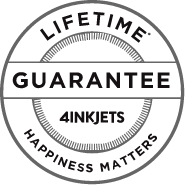Canon PC
- PC1
- PC2
- PC2L
- PC2LX
- PC3
- PC3II
- PC3III
- PC5
- PC5II
- PC5III
- PC5L
- PC5LII
- PC6
- PC6re
- PC7
- PC7re
- PC8
- PC10
- PC11
- PC11re
- PC12
- PC14
- PC20
- PC24
- PC25
- PC50
- PC60
- PC65
- PC90
- PC140
- PC150
- PC160
- PC170
- PC210
- PC230
- PC300
- PC310
- PC320
- PC325
- PC330
- PC330L
- PC400
- PC420
- PC425
- PC428
- PC430
- PC530
- PC550
- PC680
- PC700
- PC710
- PC720
- PC730
- PC735
- PC740
- PC745
- PC760
- PC770
- PC775
- PC780
- PC785
- PC790
- PC795
- PC800
- PC850
- PC860
- PC870
- PC880
- PC890
- PC900
- PC920
- PC921
- PC940
- PC941
- PC950
- PC980
- PC981
- PC1060
- PC1061
- PC1080F
- PCD320
- PCD340
With a very diverse line of quality ink and toner cartridges to fit PC Printers and many others, we provide our customers with great prices, great quality products, and an experienced staff. We also have a money back guarantee if you're not completely satisfied with your purchase.
As you decide whether or not Canon's line of PC printers is right to meet your needs, you may want to consider a number of different factors. At the top of the list for most people is cost. The initial price tag isn't the only factor here. There are always ongoing maintenance costs with printers, so considering every aspect of that equation will help you get the right choice to meet your needs. Essentially, your selection will be divided into two different categories: inkjet printers and laser printers. Let's look at inkjet technology first. These printer types involve the printer forming images on paper by spraying little drops of liquid ink onto the copy paper. The precision of these ink dots and the quality of ink determines the output of the copy. You can find an inkjet printer that gives you near-photo quality images using a specially coated photo paper. While these work for some businesses, they're often best for home use. Laser printer technology tends to work better in business settings.
Speaking of laser printers, here's how they work. They're similar to photocopiers, except these PC printers use a laser rather than a bright light to scan copies. Canon's line of PC printers uses laser technology. They create an electrostatic image of the page and they put it onto a charged photoreceptor. That photoreceptor attracts the toner in the shape that has been charged with electrostatic. Toner, in the form of printer cartridges, is used to create the image with a fine powder.
Offices that did a lot of printing traditionally used laser printers because of their speed, quality, and low operating costs. Because they have evolved over the years, becoming smaller, speedier, and cheaper, they have become a favorite of more than just small businesses. Even those working from home rely on these printers, particularly Canon printers, for all of their work.
Those are the most popular printer choices for small businesses or the home office; however, you can also find solid ink printers to use. They may be a bit messier because they use sticks made of solid ink wax in what's called a "phase change process." They work by turning the ink sticks into liquid and storing them in reservoirs. The printer would then squirt the ink onto a drum and from there, transfer it onto the paper by a process called "cold fused." Don't consider using solid ink printers unless you have a high volume color printing business.
When you buy a printer, you must first consider carefully how you will be using it - whether you'll spend most of your time printing photos or documents as well as whether you will be printing high volumes. Careful research can help you make a great choice in a Canon printer and the ink cartridges that make it run. 4inkjets.com is here to help with a great supply of printer ink cartridges no matter what choice you make when it comes to printers.
